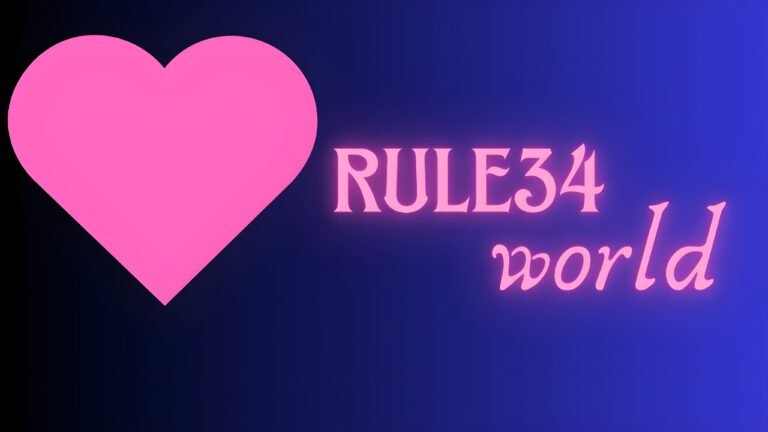Introduction to Rule 34 world and its controversy
The digital landscape is constantly evolving, and with it comes a wave of platforms that challenge our perceptions of art, content, and morality. One such platform making headlines is Rule 34 world. Known for its explicit user-generated content based on popular media, it has ignited heated debates about artistic expression versus appropriateness. As the internet continues to blur the lines between fantasy and reality, many are left questioning what constitutes acceptable material in online spaces. What do these discussions reveal about our society? Let’s dive into the conversations surrounding Rule34world and explore the implications for individuals navigating this provocative terrain.
The debate over what constitutes as appropriate content
The definition of appropriate content is murky and varies widely among individuals. What some see as harmless fun, others deem offensive or inappropriate. This discrepancy leads to heated discussions in online communities.
For instance, Rule 34 world showcases adult-themed art based on popular culture. Supporters argue it celebrates creativity by reimagining beloved characters in new contexts.
Critics counter that such platforms can foster harmful stereotypes or normalize problematic themes. They voice concerns about the influence on impressionable audiences.
Age restrictions, content warnings, and user guidelines are often proposed solutions to navigate this complex terrain. However, these measures may not satisfy everyone involved.
Grappling with what constitutes appropriateness is an ongoing process shaped by culture and societal values. The conversation continues to evolve as more voices join the chorus demanding clarity and accountability in digital spaces.
Arguments for and against Rule 34 world
Supporters of Rule 34 world argue that it serves as a creative outlet. They emphasize the freedom to explore fantasies and artistic expression without boundaries. For many, this platform is an avenue for sharing unique interpretations of popular culture.
On the flip side, critics raise concerns about its explicit content. They believe that such platforms can normalize inappropriate behavior and desensitize users to harmful themes. There’s also worry about accessibility for younger audiences who might stumble upon these sites.
Additionally, there are issues surrounding consent in fan art and adult content. Some creators feel their work is misrepresented or exploited on such sites, sparking debates about ownership and respect in digital spaces.
Every perspective highlights a crucial aspect of navigating online communities where creativity meets controversy.
Impact of Rule 34 world on society and individuals
Rule 34 world has undeniably influenced how people perceive and engage with adult content. It offers a space where creativity meets unfiltered expression, attracting diverse users.
This platform can normalize discussions around sexuality and fantasies that are often considered taboo. For some, it serves as a safe haven to explore their desires without judgment.
However, the impact is not universally positive. Critics argue that such platforms may contribute to unhealthy perceptions of intimacy and relationships. There’s also concern about the potential for exploitation and harassment within these communities.
Individuals navigating Rule 34 world might face stigma in their offline lives due to association with explicit content. This duality creates tension between personal freedom and societal acceptance, prompting deeper conversations on acceptable boundaries in digital spaces.
The ramifications reach far beyond individual users, influencing cultural narratives surrounding sexual expression in society today.


